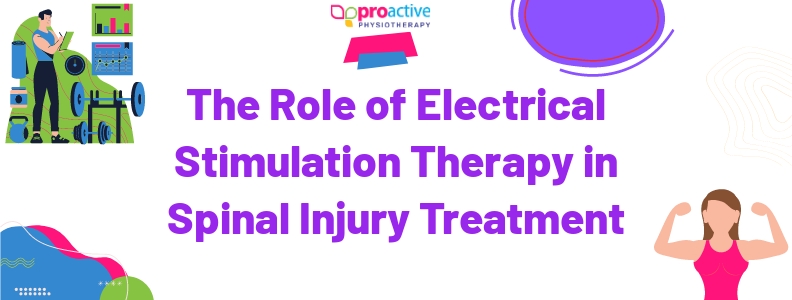An Overview Of Common Treatment Techniques Used In Edmonton For Spinal Injury Physiotherapy
Spinal injury physiotherapy is a critical part of the treatment plan for those who have suffered a spinal cord injury. Physiotherapists in Edmonton are able to deliver a variety of treatments and services which usually may help to reduce pain and improve movement, strength and balance. Common treatment techniques used include manual therapy, exercise, modalities (like electrical stimulation) and education on proper body mechanics. Manual therapy focuses on soft tissue manipulation while exercise necessitates the use of specific postures or movements to improve muscular function. Modalities involve the application of electricity, sound waves or light energy to the injured area in order to reduce inflammation and pain levels. Education sessions involve teaching individuals how to utilize their spine appropriately in everyday activities. Alas, hydrotherapy exercises often form part of the overall treatment plan by providing a safe and practical way for people with spinal injuries to stretch and toughen muscles whilst decreasing stress on joints. Spinal injury physiotherapy in Edmonton can provide resources that can assist individuals with managing their condition so that they may continue to lead active, healthy lifestyles long after their injury has occurred.

The Benefits Of Physiotherapy For Spinal Injury Rehabilitation
Physiotherapy is a of most importance form of intervention for individuals suffering from spinal injuries. The goal of physiotherapy for spinal injury rehabilitation is to provide practical and evidence-based management to those living with pain, disability and impaired function as a result of these types of injury. Physiotherapy works to improve the patient’s overall quality of life by providing long-term strategies to minimize pain, maximize movement and minimize disability.
The most common methods used in Edmonton for spinal injury rehabilitation include manual therapy techniques like joint mobilization and soft tissue massage, along with various modalities like ultrasound, electrical stimulation and laser therapy. These types of treatments are designed to reduce inflammation, pain sensitivity, spasm, muscular length tension imbalances, scar tissue formation, fascia restriction and muscle imbalance after spinal injuries. With these treatments, physiotherapists can help patients get back their functionality while increasing strength, coordination and balance that may have been lost as a result of their injury.
These types of treatments are also often coupled with exercise programs including stretching exercises aimed at improving range of motion and flexibility, muscle fortifying exercises to increase strength and endurance levels, stabilization exercises for postural control and balance training for increasing core stability. Through this combination of physical therapies addressed through both manual therapy interventions along with exercise prescription , Physiotherapists in Edmonton offer comprehensive spinal injury rehabilitation programs targeted at optimizing the recovery time frame post-injury .
Overall , the benefits to physiotherapy for those recovering from a spinal injury include improved mobility and function; improved posture; decreased chronic pain; decreased risk of re-injury; increased independence; improved quality of life; increased self-esteem ;and greater overall wellbeing. Therefore , it is imperative that individuals familiarize themselves with the importance of seeking proper physiotherapy treatment in order to ensure a full recovery from any tragic spine injury they may be encountering .

Exploring The Different Types Of Physiotherapy Exercises For Spinal Injury
Physical therapy is a critical part of the treatment plan for spinal injuries or pain. Physiotherapy exercises are used to help improve motor control, movement and strength, along with reduce pain and stiffness. Exercises may focus on stretching, fortifying and/or stability depending on the individual’s condition.
Stretching exercises target areas of soreness, tightness or poor mobility to increase flexibility. Strengthening exercises are used to build strength in muscles that support the spine, like the core muscles responsible for postural control and stability. Balance and proprioception activities help to improve coordination and correct any muscle imbalances around the spine.
Finally, therapeutic exercise can definitely be used to decrease pain levels by improving blood flow and muscle activation in impinge oned areas. This kind of exercise helps improve range of motion while increasing circulation and lymphatic drainage throughout the duration of the back or neck area. All these techniques are designed to promote better healing and quality of life after a serious spinal injury or surgery.
Overall, physiotherapy exercises should be tailored specifically for each individual based on their specific condition. Professional physical therapists must take into account a person’s medical history, current symptoms, physical limitations and potential for improvement when developing an exercise program for their client suffering from a spinal injury. With proper guidance from a trained professional, individuals can improve their strength and flexibility following an injury without causing further damage to the spine.

Understanding The Advantages Of Using Aquatic Therapy For Spinal Injury Treatment
Using Aquatic Therapy for Spinal Injury Treatment is a highly practical way to relieve pain and improve mobility. The buoyancy of the water reduces bodyweight, allowing for increased range of motion along with aiding in relaxation. Physiotherapists also use aquatic therapy to help patients toughen their muscles without excessive loading on their joints. The warm water relaxes tight muscles and increases blood flow promoting healing. Alas, resistance from the water helps increase balance, coordination and endurance which is especially beneficial for those with spinal cord injuries. Pool-based activities can also be used to improve aerobic conditioning and help regain postural control. Finally, the combination of exercise and relaxation can definitely be a great stress relief allowing people to take their mind off the injury while they exercise. All in all, Aquatic Therapy has many advantages when used correctly by experienced physiotherapists who understand how recommend you work with various types of spinal injuries.

An Overview Of Manual Therapy Techniques Used For Spinal Injury Treatment
Manipulative therapy is a set of manual skills that physiotherapists use to assess, diagnose, and treat spinal pain or dysfunction. This technique involves the application of various ‘hands-on’ treatments like joint mobilization and manipulations, soft tissue mobilization, neuromuscular techniques and myofascial release. These types of techniques are used to reduce musculoskeletal pain and improve function. They can definitely be applied in varied amounts of ways including passive motion techniques, manual resistance exercises and joint stretches.
Spinal manipulation techniques involve the use of short lever thrusts over a single joint or segment in order to restore normal biomechanical movement patterns. When applied correctly, these techniques can help increase range of motion, reduce muscle spasm and decrease pain. Myofascial release is the use of sustained pressure into tissues in order to facilitate increased mobility in the impinge oned area. This technique can help reduce muscular tension along with break down adhesions between muscles, skin and fascia (the connective tissue surrounding muscles).
Neuromuscular re-education consists of specific exercises designed to restore proper function of impinge oned muscles. These types of exercises involve isolated contractions with slow movements performed in correct posture while focusing on proper breathing patterns. Finally, proprioceptive training helps patients learn how to respond practically to external forces by utilizing sensory information from their environment. All of these treatment strategies are used together for comprehensive rehabilitation for individuals suffering from spinal injury related problems.

The Role Of Electrical Stimulation Therapy In Spinal Injury Treatment
Electrical stimulation therapy (EST) is a key component of spinal injury treatment in Edmonton. This kind of therapy is used to help reduce pain, toughen muscles, and improve blood flow. EST helps reduce inflammation and soft tissue formation around the injured area, which usually may make it much easier to perform physical therapy exercises. It is worth mentioning that it has a positive effect on nerve conduction velocity, allowing signals from the brain to reach the impinge oned area more quickly.
The primary goal of EST when treating spinal injury is to reduce pain and to support the healing process. EST works by using electrical currents sent through electrodes placed on or near the impinge oned area. These types of currents can range from pulsing low-grade frequencies for pain relief all the way up to higher frequencies for muscle fortifying programs.
EST must be administered properly by a experienced clinician who will set specific parameters depending on the patient’s condition and goals. Improper use of EST almost always result in further damage as well as paralysis if not done correctly. As such, it’s of most importance that any type of electrical stimulation therapy be performed under medical supervision by qualified physiotherapists in Edmonton who specialize in spinal injuries and have experience in this type of treatment modality.

Conclusion
Spinal injuries are a serious condition that can impact a person’s ability to perform everyday tasks. Physiotherapy is a critical form of treatment used to help rehabilitate those with spinal injury. Common techniques used in Edmonton include specific exercises, manual therapy and electrical stimulation therapy. Aquatic therapy is also beneficial for increasing strength and movement in those with spinal injury. In conclusion, the use of these physiotherapy treatments can definitely be highly practical in helping people living with a spinal injury recover mobility and reach their maximum level of functioning.

FAQ
What is the overall cost of spinal injury physiotherapy in Edmonton?
The cost of spinal injury physiotherapy in Edmonton varies depending on the type and severity of the injury, along with the type of treatment used. Your physiotherapist will discuss your options and associated costs with you prior to beginning treatment.
What are the benefits of spinal injury physiotherapy?
Spinal injury physiotherapy can help to reduce pain, improve muscle strength and coordination, improve mobility, and restore normal function. It can also help to prevent further injury or complications.
Are there any risks associated with spinal injury physiotherapy?
As with any medical treatment, there are some risks associated with spinal injury physiotherapy. These types of include swelling, bruising, or soreness at the site of treatment. Your physiotherapist will discuss any potential risks with you prior to starting treatment.
How long does spinal injury physiotherapy take?
The duration of spinal injury physiotherapy almost always depends on the type and severity of the injury. Generally, treatment sessions may last anywhere from 30 minutes to an hour, and you may be required to attend multiple sessions to achieve the desired results.
What should I expect during a spinal injury physiotherapy session?
During a spinal injury physiotherapy session, your physiotherapist will assess your condition and develop a treatment plan tailored to your individual needs. This may include therapeutic exercises, manual therapy, and other techniques like ultrasound, electrical stimulation, or laser therapy.




